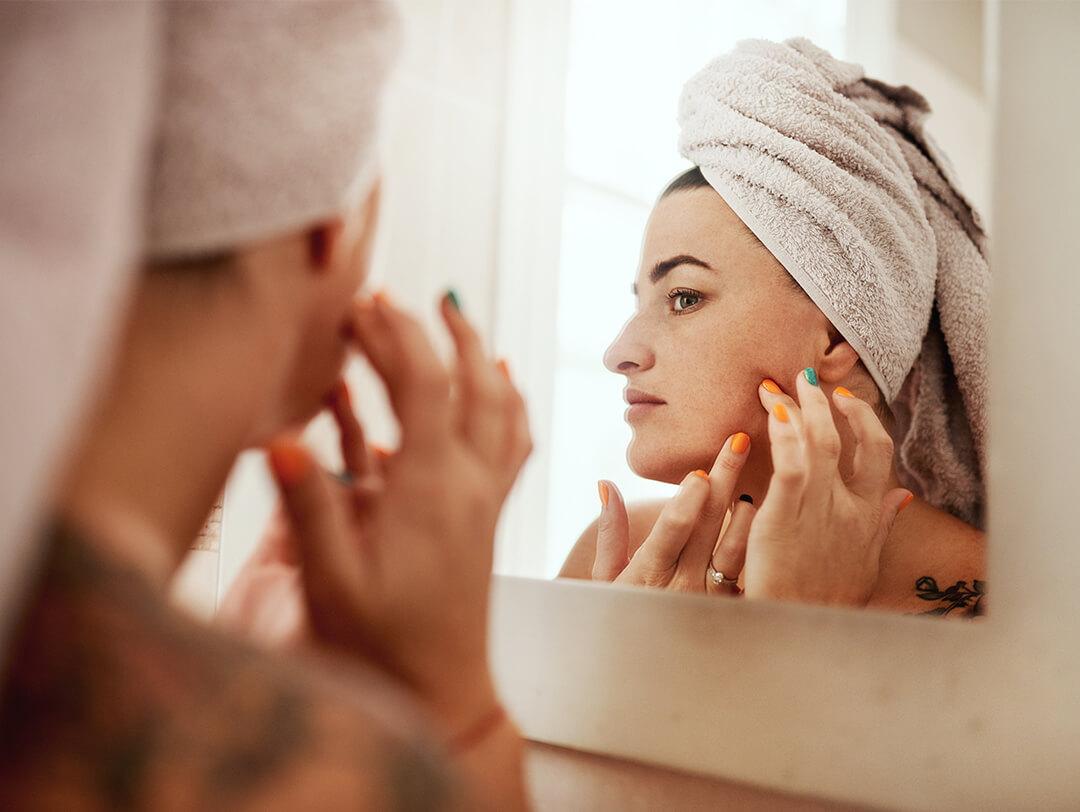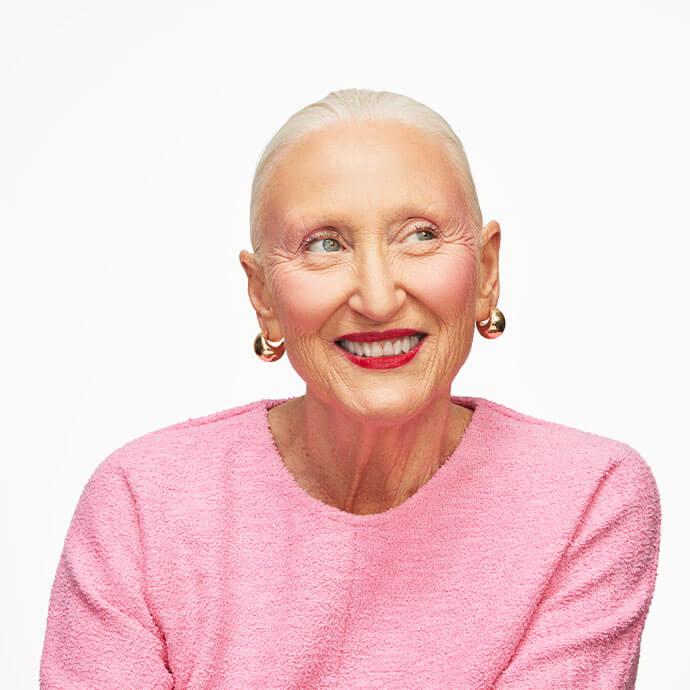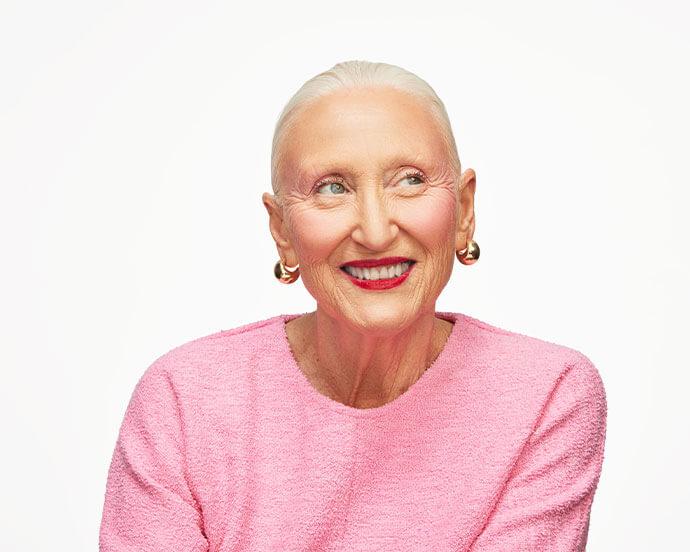Here’s How You Can Treat Every Type Of Acne



Katrina Mitzeliotis Lanza


Regardless of whether you believe in a 12-step or 2-step skincare routine, there’s one truth that’s universal in the skincare space: dealing with acne is annoying. Not only do breakouts seem to pop up (pun intended) at the worst possible time, (like when you’re super stressed or you’re about to hop on a Zoom call), but typically once they arrive they stay for a couple of days. Even if you have a crystal clear complexion, chances are you’ve dealt with acne at some point in your life—but don’t worry, with the right tools you can zap away your pimples in no time.


It's about glam time you treated yourself.
MEET THE EXPERT
Hadley King, MD, FAAD, is a board-certified dermatologist in NYC who specializes in medical and cosmetic dermatology. She is also a clinical instructor of dermatology at the Weill Medical College of Cornell University.
What causes acne?
Trying to pinpoint the exact culprit behind a new breakout isn’t always easy, especially because there’s a laundry list of reasons that might be contributing to it. “The main causes of acne are genetics and hormones,” says Hadley King, MD, FAAD, at Hadley King Dermatology in NYC. “Stress can play a part as well and for some people, diet may make a difference, too.”
And that’s not all—depending on the type of pimples you’re dealing with, hygiene can play a role, as well as certain makeup and skincare products, (especially if they’re comedogenic). Another surprising cause? The fabric of your clothing (maskne, anyone?). Switching to oil-free makeup and wearing clothing that wicks when you workout can make a major difference. Now, in order to treat your breakouts, it’s important to know what type of acne you’re dealing with (more on that below).
Types of acne
Identifying what type of acne you have will help you understand what’s behind your bad breakout. The majority of acne falls into three categories: comedonal acne, (AKA whiteheads and blackheads), cystic acne (or inflammatory acne), and hormonal acne. Even in individuals who don’t have oily skin, whiteheads and blackheads are quite common. “Sebum and dead skin cells can clog pores, resulting in comedonal acne,” Dr. King says.
If you experience pain and swelling, chances are you’re dealing with cystic acne. “If there is also inflammation, which can be caused by bacteria and pro-inflammatory molecules, then inflammatory acne can form,” says Dr. King, referring to painful under-the-skin pimples and acne cysts.
If you notice a few pimples in a specific area, (like on your chin or around your jaw), that seem to pop up like clockwork at the same time each month, then you’re probably dealing with hormonal acne, which is caused by fluctuating hormones in your body. This is common when you’re menstruating and during different stages of your life, like puberty or pregnancy.
Best acne treatments
Want clear skin? While we wish we could give you one magical fix that would work on every pimple, the potent treatments below provide a targeted roadmap for treating every type of acne you can imagine.
1. Start using salicylic acid ASAP:
As far as acne is concerned, salicylic acid, a powerful beta hydroxy acid, is one of its greatest enemies. “Salicylic acid is an excellent pore-clearing ingredient because it exfoliates the surface of the skin and penetrates into pores to remove oil,” says Dr. King. By exfoliating the skin and removing excess oil, it prevents pores from getting clogged, which leads to breakouts. “This is a great ingredient for people with oily and acne-prone skin, and particularly for treating and preventing comedonal acne (blackheads and whiteheads),” Dr. King says. The chemical exfoliator can penetrate below the surface of the skin to loosen up bacteria and dead skin that might be clogging your pores, and it also has anti-inflammatory properties which can help with cystic acne.
You know the saying about an apple a day? Well, it can also apply to this powerful pimple-fighting ingredient: Cleanse with salicylic acid once a day to keep acne away. In order to really reap the benefits, use a cleanser with it on a daily basis to slough off dead skin that can clog pores. And if you want to see more immediate results, try a spot treatment that contains the potent ingredient, like the MURAD Rapid Relief Acne Spot Treatment. If you’re using a spot treatment, apply it once a day to ensure you don’t irritate your skin.
While salicylic acid works wonders on acne, if you’re suffering from hormonal acne during pregnancy, you should use an alpha hydroxy acid treatment instead as salicylic acid isn’t safe for use during pregnancy, (but we’ll get to AHAs later).
2. And don’t forget about benzoyl peroxide:
If salicylic acid is acne’s worst enemy, then benzoyl peroxide is its trusty sidekick. This antibacterial ingredient can really help to eliminate acne-causing bacteria. You can also use benzoyl peroxide on its own as an acne treatment if you want to kill bacteria and clear out clogged pores, and it’s a great go-to for both inflammatory and non-inflammatory acne.
“Micronized formulations are great because they cause less irritation to the skin, and they stabilize the molecule so the shelf life can be longer,” says Dr. King. The TULA SKINCARE Go Away Acne Spot Treatment incorporates benzoyl peroxide to clear out acne-causing bacteria, plus it has soothing probiotics and tea tree oil to reduce redness. This makes it a great go-to for alleviating pain and swelling that can accompany cystic acne, and for clearing out blackheads and whiteheads.
3. Slap on a pimple patch:
Want to banish a new zit ASAP? There’s a pimple patch for that. Not only do these small-yet-mighty treatments deliver targeted ingredients to break up your breakout, but they also keep your zit under wraps, which keeps you from picking at your pimple (a win-win). If you want to watch them work their magic, try the CUROLOGY Acne Patches. These hydrocolloid patches absorb oil, dirt, and bacteria from inside your zit, so you wake up with a less noticeable pimple. Hydrocolloid patches pull fluid out of acne, making them most effective on pus-filled pimples (like whiteheads). If you feel a painful, under-the-skin pimple brewing, using a pimple patch that contains salicylic acid and benzoyl peroxide will reduce redness and swelling—but keep in mind that all pimple patches are most effective when used during the early stages.
4. Try tea tree oil:
While the idea of applying oil to acne-prone skin may seem counterintuitive, tea tree oil can calm and soothe breakouts, making it especially beneficial for anyone with oily skin that’s prone to breakouts. “Tea tree oil has antibacterial and anti-inflammatory properties, both of which can be helpful for acne,” says Dr. King. It also contains antifungal and anti-viral properties, in addition to being non-comedogenic. “It is unlikely to clog pores and make acne worse,” says Dr. King.
We especially love SUNDAY RILEY’s U.F.O. Ultra Clarifying Acne Treatment Face Oil, which zaps pimples overnight thanks to a soothing combination of tea tree oil, salicylic acid, and black cumin seed oil. These ingredients work together to clear out bacteria, while chamomile and milk thistle reduce irritation and calm redness.
5. Exfoliate, exfoliate, exfoliate:
If you want to prevent pimples from popping up in the first place, make sure to keep your pores clean and free of dirt, makeup, and bacteria by adding a chemical exfoliator in your routine. Exfoliation clears out dead skin cells and removes buildup responsible for clogging pores. Instead of a scrub, which can irritate acne-prone skin, a chemical exfoliator can gently break up the buildup, all thanks to AHAs, like glycolic acid and lactic acid. These alpha hydroxy acids work similar to salicylic acid, however, they won’t penetrate as deep as the BHA, making them better suited for those with sensitive skin.
Lactic acid is the most gentle of the AHAs and it’s also a humectant, so it works to clear and hydrate your complexion at the same time. Both glycolic acid and lactic acid are deemed safe for use during pregnancy, making them a great alternative for anyone suffering from hormonal acne that needs a potent treatment that can compare to salicylic acid.
The REN CLEAN SKINCARE Glycol Lactic Radiance Renewal Mask packs a double punch as it serves up exfoliating AHAs to minimize pores, fade hyperpigmentation, and leave you with soft, glowing skin. And remember—while sunscreen is an important step in any skincare routine, it's especially important when using AHAs and BHAs, as your complexion is more sensitive to the sun's UV rays.
6. If you have super sensitive skin, sulfur is the solution for you:
Those with sensitive noses might not be thrilled with the smell associated with sulfur treatments, but if you suffer from acne and have sensitive skin, this gentle-yet-effective treatment can fight your pimples without messing with your complexion. Ideal for anyone with oily skin or those prone to whiteheads and blackheads, sulfur can clear up mild acne and control excess oil production to keep your complexion clear without overdrying or causing irritation. This makes it a safe choice for sensitive skin types. It’s also anti-inflammatory and contains anti-sebum properties which make it great for treating skin conditions like rosacea. Incorporate a sulfur face wash, like the KATE SOMERVILLE® EradiKate® Daily Foaming Cleanser, into your routine on a daily basis to keep breakouts at bay.
7. Really stubborn acne might call for retinoids:
If your acne doesn’t seem to subside with the above treatments, it might be time to turn to retinoids, which work to unclog pores and prevent dead cells from building up. “They increase cell turnover and reduce the tendency of cells and keratin debris to clump together and clog up pores,” says Dr. King. Retinoids can also help fade acne scars and discoloration. The most common retinoids include adapalene (which is available in two forms: over-the-counter and prescription), tretinoid, or tazarotene.
8. You might need medication if….
You’ve tried multiple over-the-counter treatments and ingredients and still aren’t seeing any results. Stubborn acne and cystic acne typically call for oral medication to alleviate the situation. Your dermatologist can assess your breakout to determine what medication is best for you. The most commonly prescribed oral acne medications include Erythromycin, Tetracycline, Minocycline, and Doxycycline. Most medications are used in conjunction with topical OTC treatments (like creams, lotions, and gels) to achieve the best results.
9. When all else fails, ask your derm for a cortisone shot:
This emergency treatment solution can be a miracle worker if you suffer from painful, cystic acne or hormonal acne and need to banish a bad blemish before a big event. Your dermatologist can assess the pimple and determine if it qualifies for a cortisone shot, which is then injected into the zit to reduce pain, swelling, and redness. The result? In 24-48 hours your unsightly pimple will be gone for good. While it may sound too good to be true, a cortisone shot also comes with risks and side effects, so this treatment approach should be used sparingly.
Want in on all the IPSY Glam Bag fun? Take our Beauty Quiz now to get started. Already an Ipster? Refer your friends to earn points, which you can use toward products. Either way, don’t forget to check us out on Instagram and Twitter @IPSY.
Like this article? Share it with your friends by clicking the icons below!
Liked this post? Share!
Related Stories


Skin
How to Adjust Your Skincare Routine for Mature Skin in the Winter
Published on Dec 4, 2025 • 7 min read


Skin
Meet the Best Moisturizers for Winter, According to Dermatologists
Published on Dec 1, 2025 • 9 min read


Skin
What Is Inflammaging—and Why Everyone’s Talking About It
Published on Dec 1, 2025 • 8 min read


Skin
6 Skincare Trends to Have on Your Radar in 2026, According to Experts
Published on Dec 1, 2025 • 7 min read


Skin
We Grabbed Our Crystal Ball and Found These 6 Skincare Predictions for 2025
Published on Dec 10, 2024 • 7 min read


Skin
Simple Self-Care Tips That Actually Make a Difference
Published on Nov 13, 2025 • 12 min read


Skin
These 9 Face Scrubs Will Unlock Soft and Smooth Skin on Contact
Published on Nov 5, 2025 • 10 min read


Skin
10 Thanksgiving Foods That Will Have Your Skin Coming Back for Seconds
Published on Oct 15, 2025 • 7 min read


Beauty Picked Just for You
Get 5 products worth up to $70
Plus exclusive access to epic deals up to 80% off
Starting at just $14/month. Cancel anytime.